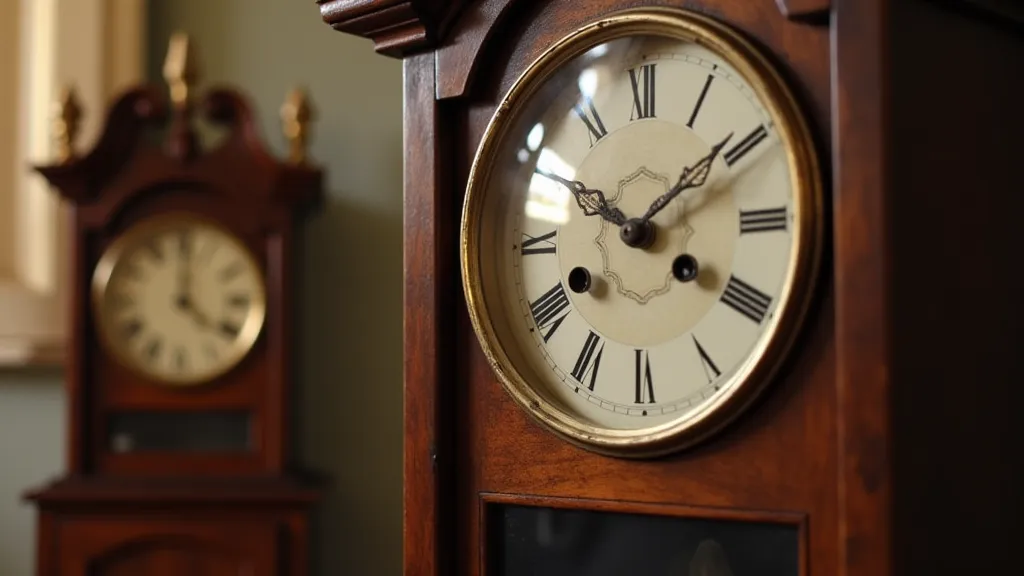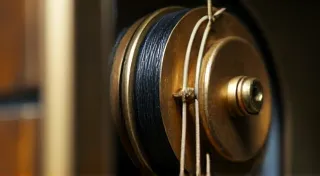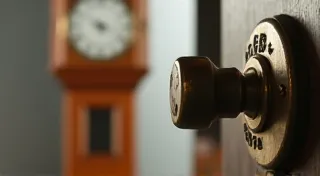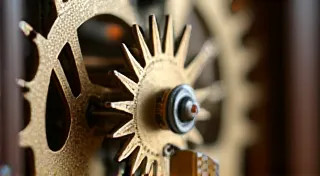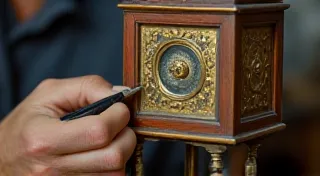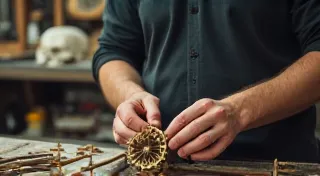The Importance of Humidity Control for Antique Clocks
Antique clocks, with their intricate mechanisms and often delicate materials, are vulnerable to environmental factors. While temperature fluctuations often receive attention, humidity plays a surprisingly critical, and often overlooked, role in their preservation. Understanding the impact of humidity and implementing proper humidity control measures is essential for anyone involved in clock repair, restoration, or simply owning a treasured vintage timepiece. The history and craftsmanship behind these timepieces is fascinating; exploring the history and evolution of antique American clock movements reveals just how complex and valuable these creations are.
Why Humidity Matters for Antique Clocks
Wood, brass, steel, and even the adhesives used in clock construction react differently to humidity. Here's a breakdown of the problems excessive moisture can cause:
- Wood Swelling and Distortion: Wood, a primary component of many antique clocks, absorbs moisture from the air. This absorption causes the wood to swell, potentially warping the clock case, cracking veneer, and affecting the movement’s functionality. Grandfather clocks, in particular, are prone to these issues due to the significant amount of wood used in their construction.
- Rust and Corrosion: Moisture accelerates rust and corrosion on brass and steel components, particularly in the clock movement. This leads to increased friction, seized gears, and ultimately, failure. This is a particular concern for marine chronometers, which often require very precise humidity control to prevent corrosion.
- Adhesive Degradation: The glues used in antique clock construction, often animal-based, are susceptible to breakdown when exposed to high humidity. This can lead to parts becoming loose or falling off. Maintaining optimal humidity is a key part of regular antique clock maintenance.
- Mold and Mildew Growth: High humidity creates a breeding ground for mold and mildew, which can damage both the clock’s appearance and internal components. Regular inspection and appropriate humidity control can prevent this.
- Damage to Dial and Decoration: Moisture can contribute to the lifting or bubbling of painted dials and the deterioration of delicate ornamentation. The delicate artistry of these clocks demands careful preservation.
Ideal Humidity Levels
The ideal relative humidity (RH) for antique clocks is generally considered to be between 45% and 55%. Staying within this range minimizes the risks outlined above. Drastic fluctuations are even more damaging than consistently being slightly outside this range. It's not just about the average humidity, but the consistency. Sudden changes can be catastrophic, particularly for intricate mechanisms like those found in cuckoo clocks.
Managing Humidity: Practical Steps
Controlling humidity can be challenging, but several strategies can help:
- Use a Hygrometer: A hygrometer is a device that measures relative humidity. Placing one near your antique clocks allows you to monitor humidity levels accurately. Regular checks using a hygrometer are crucial for early detection of humidity issues.
- Humidifiers/Dehumidifiers: Depending on your climate and the existing humidity levels in your home, you may need to use a humidifier to add moisture during dry periods or a dehumidifier to remove excess moisture. Choose models designed for precision control and avoid models that release large volumes of air. The type of device needed often depends on the time of year and local climate.
- Climate-Controlled Storage: If you're storing clocks for extended periods, consider using a climate-controlled storage unit that maintains a stable humidity level. This is particularly useful for valuable or delicate clocks.
- Case Storage: Placing clocks in cases can help buffer them from sudden humidity changes. Ensure the case is well-ventilated to prevent moisture buildup.
- Avoid Damp Locations: Never store antique clocks in basements, attics, or other areas prone to dampness. These areas are notorious for inconsistent humidity levels.
- Ventilation: Proper ventilation can help reduce humidity. Avoid sealing a clock in a small, enclosed space.
- Understanding Mainsprings: A Related Consideration: While humidity directly impacts wood, metal, and adhesives, it can also indirectly impact the functionality of antique clock mainsprings. Changes in humidity can cause subtle shifts in spring tension, impacting timekeeping accuracy.
Beyond General Guidelines: Specific Clock Considerations
Different types of antique clocks may require slightly different humidity management approaches. Understanding these nuances is crucial for preservation.
- Grandfather Clocks: These large clocks often contain substantial amounts of wood and are particularly susceptible to warping. The sheer volume of wood necessitates vigilant humidity monitoring.
- Cuckoo Clocks: The intricate wooden mechanisms in cuckoo clocks are highly sensitive to humidity. The complex construction makes them particularly vulnerable to damage.
- Marine Chronometers: These highly accurate timepieces often benefit from specific humidity control, as part of their complex manufacturing process involved sealing to prevent corrosion. The specialized construction and purpose demand precise care.
- Bracket Clocks: Smaller bracket clocks, while less imposing than grandfather clocks, still possess delicate veneer and intricate movements that are affected by humidity fluctuations.
- Atwater Clocks: Early Atwater clocks, with their unique electric movements, are particularly sensitive to changes in humidity. Moisture can corrode electrical contacts and damage delicate components.
- Mantel Clocks: Common mantel clocks, often found in Victorian homes, require similar humidity precautions to protect their delicate finishes and mechanisms.
Detailed Explanation of Damage Mechanisms
Beyond the summarized risks described earlier, a deeper look reveals the intricacies of how humidity damages antique clocks. Wood, for example, doesn't just "swell" uniformly. The rate of moisture absorption varies depending on the wood's grain and density. This uneven swelling can create internal stresses that lead to cracking and veneer lifting. Metals, like brass and steel, undergo a process called galvanic corrosion when exposed to moisture and dissimilar metals. This process accelerates rust formation and weakens components. Even the seemingly innocuous adhesives used in clock construction are often susceptible to microbial attack when exposed to high humidity. These microorganisms break down the adhesive bonds, leading to parts falling off or becoming loose. Furthermore, certain paints and finishes commonly used on antique clocks are hygroscopic, meaning they absorb moisture from the air. This absorbed moisture can lead to blistering, cracking, and discoloration of the finish.
Practical Steps for Advanced Humidity Control
While general guidelines are helpful, dedicated clock enthusiasts may want to explore more advanced humidity control techniques. One such technique involves using desiccant packs within the clock case. Desiccants are materials that absorb moisture from the air, helping to maintain a low humidity environment. Another technique involves using a data logger to continuously monitor humidity levels over time. This allows you to identify patterns and trends that might not be apparent with occasional spot checks. For particularly valuable clocks, it may be worthwhile to invest in a dedicated climate control system that precisely regulates temperature and humidity. These systems often incorporate features such as automatic adjustments based on weather forecasts and remote monitoring capabilities.
Conclusion
Protecting your antique clocks requires a comprehensive approach to preservation, and humidity control is a vital component. By understanding the risks associated with fluctuating moisture levels and implementing appropriate measures, you can help ensure that these treasured timepieces continue to tick for generations to come. Remember to occasionally consult resources on troubleshooting a stopped antique grandfather clock as preventive maintenance for humidity-related issues can significantly extend its lifespan.
